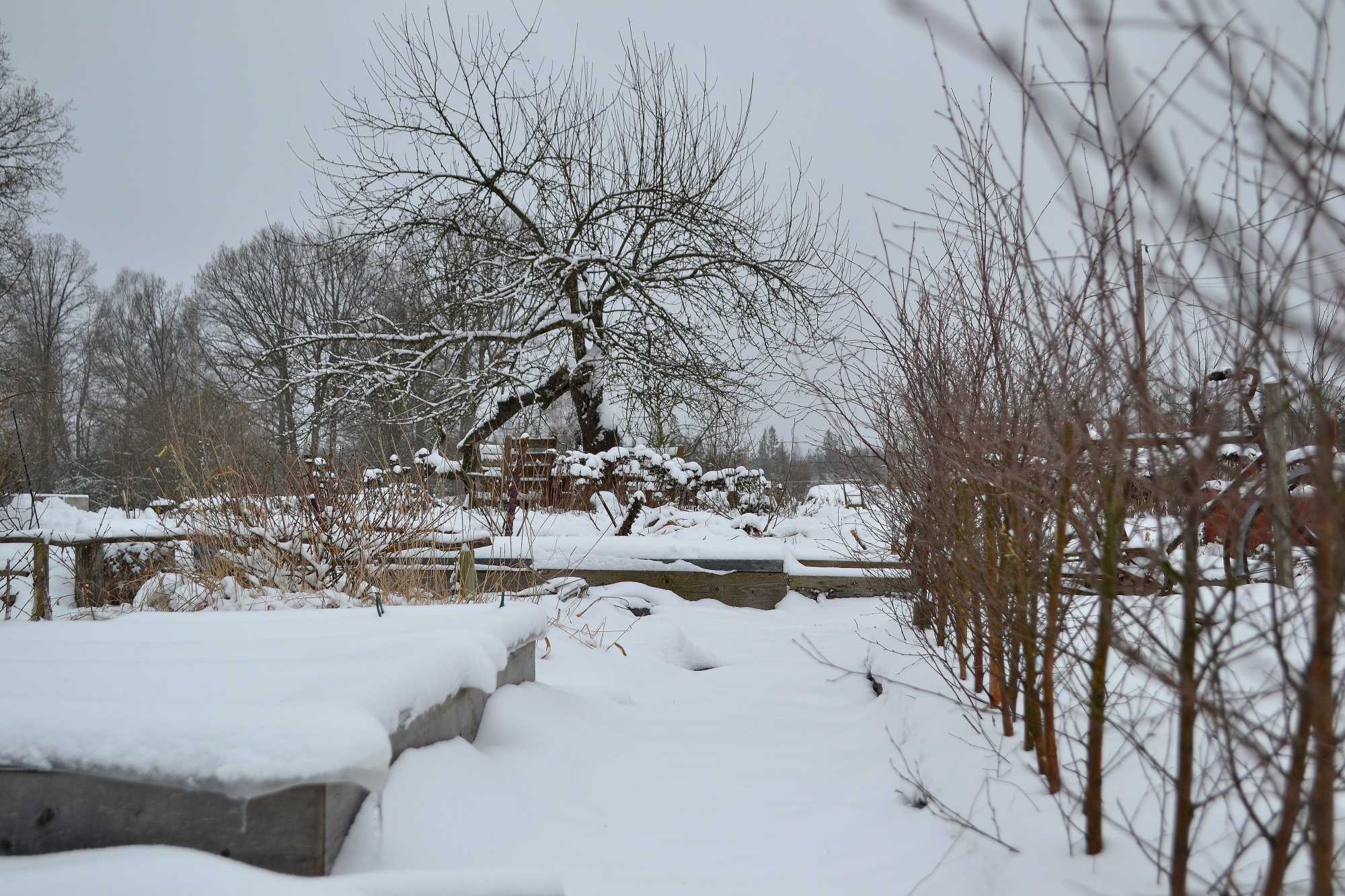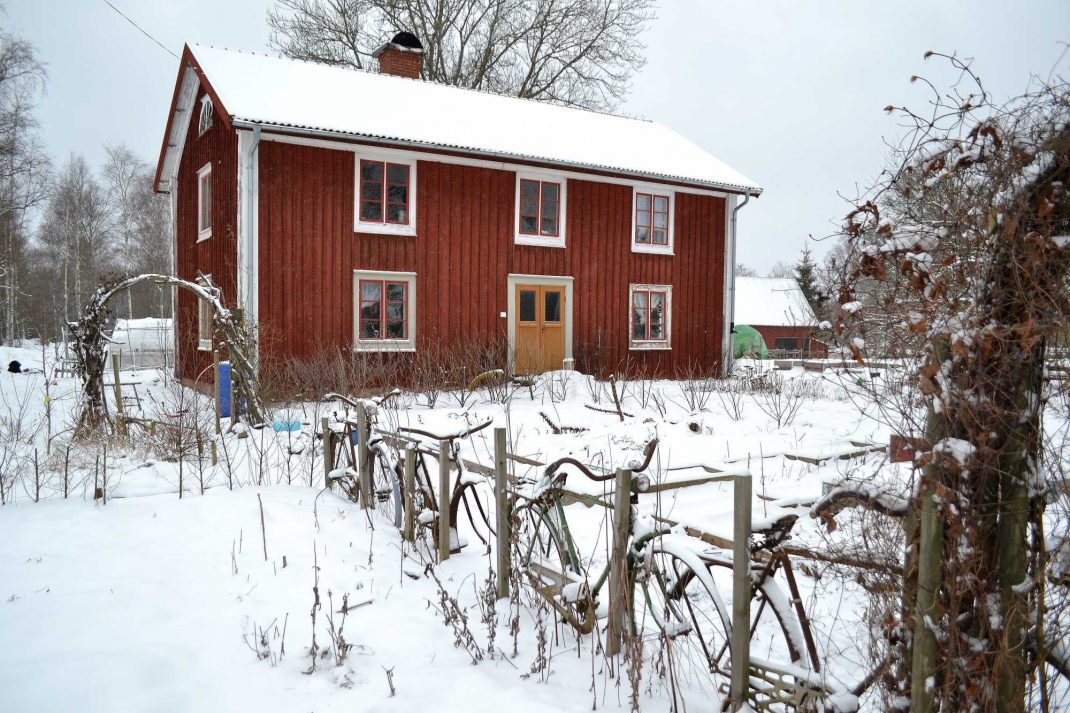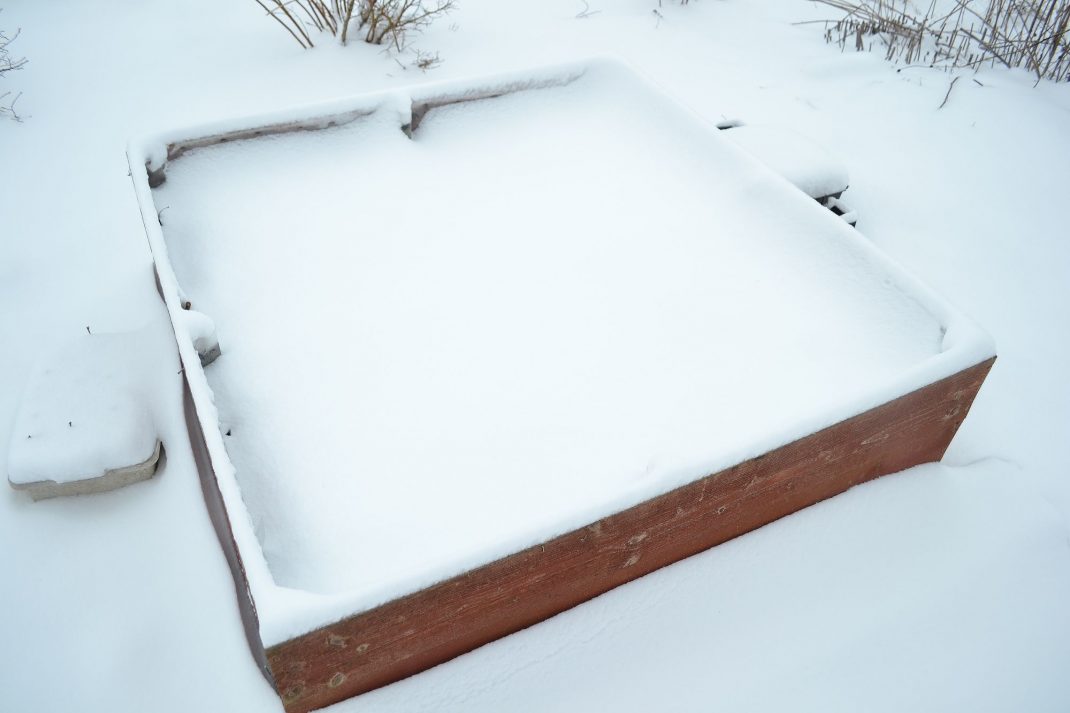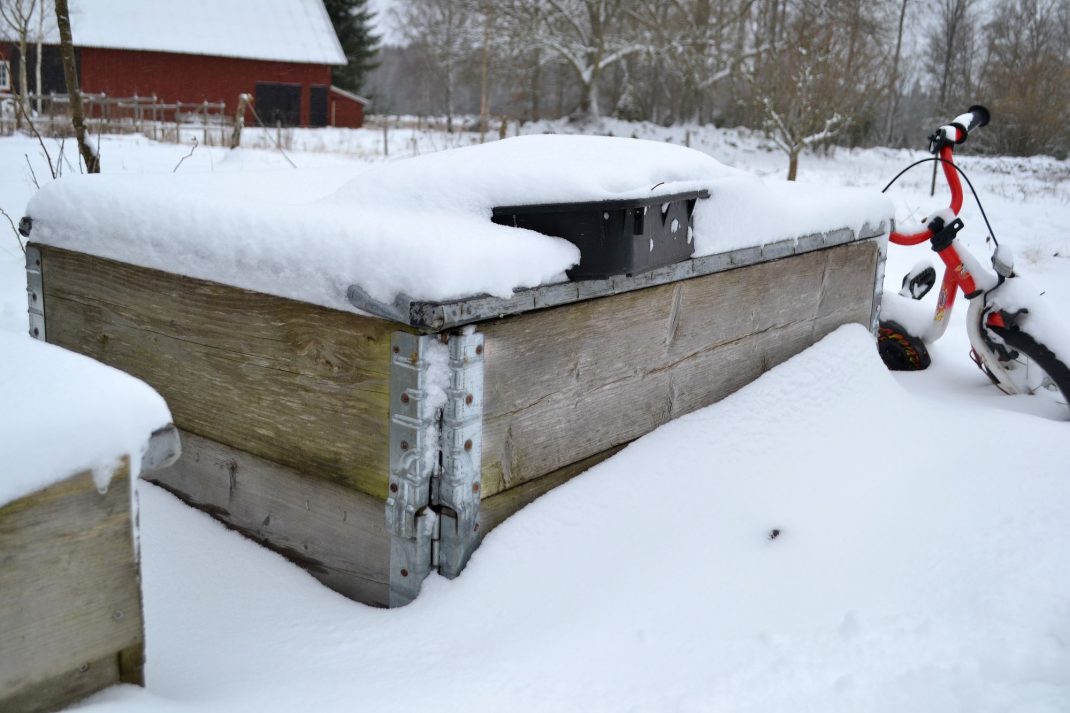A snowy start to March gardening
I thought spring was finally here, but it looks like I need to prepare myself for some more winter projects. March gardening is always so unpredictable!

A snow covered garden i March.
Fool's spring, late spring or second winter. It happens almost every year here in the kitchen garden. Usually when I finally start believing in sun and warmer temperatures. Typical for March gardening. I would love for some nice spring warmth by now but I don't feel too stressed about having some snow again. Right now, we are trying to get better from yet another bout of winter vomiting disease. I'm so tired of it! So, some snow and cold temperatures is not a big deal in comparison. And it forces me to stay realistic about how much I can get done at the moment. The snow and cold helps me to calm down and rest.

The snow helps me calm down and rest.
Not too worried
I see so many signs of spring in my garden now. Plenty of little spring onions and garlic greens are peeking out from the soil. Several of my winter sowings are growing in my beds and cultivation boxes, for example spinach and cabbage. So, should I be worried about them?
Read more about growing vegetables in winter: Winter sowing
Not at all! The best thing about winter sowings is of course how hardy these vegetables truly are. As long as I sow the right vegetables that can take the cold, they will survive an unexpected cold spell (as long as they have germinated.) I'm counting on that all of my winter sown vegetables are doing just fine. No need to panic or protect the vegetables with fabric. I'm just going to leave it as it is. The snow becomes a protective layer on top too of course. The harshest winds and temperatures stay above the snow.

Looks just like March gardening to me! Now the winter sowings of lettuce, dill, spinach and cabbage get some water from the snow and I can cover the box with a lid to get an early harvest.
Self-watering
The unpredictable March gardening comes with some pros too, the snow has another important function after all: to water the seeds. The snow will water the soil as soon as it starts to melt, and I won't have to do anything at all! Outstanding. When I do my winter sowings, like in the snow-covered box above, I don't water at all and I don't use a lid either. Simply because I want nature to do the watering. I might put some protection on top when it gets a little bit warmer outside, so that the soil gets some extra heat (which will help speed up the growth.) If I on the other hand had covered the box and didn't water the soil, the seeds wouldn't grow.
Winter compost
I haven't had any regular compost in my garden for several years now. All of the kitchen scraps are instead composted with the help of bokashi. I'm showing you one way to deal with the winter compost in the clip above. Another way is to use pallet collar frames that I add to my garden whenever I need some extra space to work with. I fill the frames with bokashi compost and old leaves, then I top it off with soil and sow as soon as the pallet collar frame is full. This is such a great and simple way to store your compost. It's really easy to keep working with the pallet collar containers in winter too.

New snow on my pallet collar beds. March gardening can be tricky. I use more than one pallet collar and fill it with compost in winter, so I can grow in it in spring.
Snow on the roof
The snow is a great resource in the polytunnels too, even though we need to bring it in there of course. There are plenty of plants growing in all of the beds in here and plenty of seeds that haven't germinated yet. A great way to water the seeds is to simply add a layer of snow on top of your beds. I only do this for seeds that haven't germinated yet. I water the germinated seeds in my polytunnel with a watering can.
About the plastic on your tunnel. Should you keep it on in winter or not?
Snow will of course weigh the plastic down, but actually not nearly as much as I first thought it would. The bows stand so close to one another and at an angle where the snow can slide off easily. If it's warm in the tunnel, the heat and the slippery plastic help the snow slide off more easily. On cold days, I usually try to help the process by pushing the snow with a long broom or a rake.
But the snow is not the biggest problem for me this time of year, it's the wind. The storm Gorm ruined the plastic of my polytunnel in 2015, but I was fortunately able to repair it. I noticed a new small hole in the plastic but except for that, it's completely intact. It's such a great spot to grow vegetables early in spring!
Excited about spring!
The soil is starting to thaw and the snow-free spots are black and so enticing this time of the year! I just love it. It's so fun to start a new season here in the garden. I wonder what will happen!
I'm especially looking forward to spending time in the garden with my children. It's so wonderful to just be outside together. Probably in a lot of mud if I know them right. They are digging a huge hole in the backyard right now!
/Sara Bäckmo



Leave a Reply
You must be logged in to post a comment.